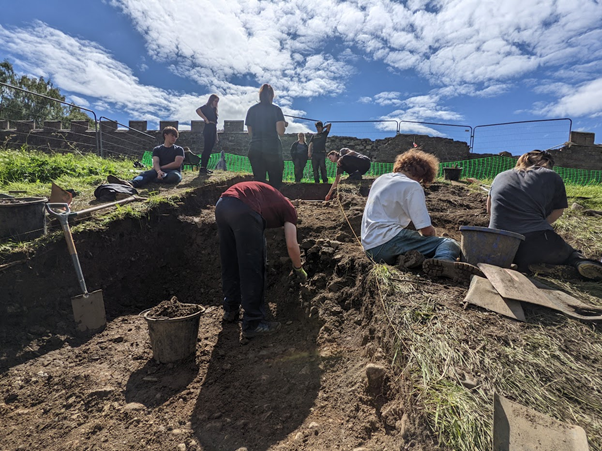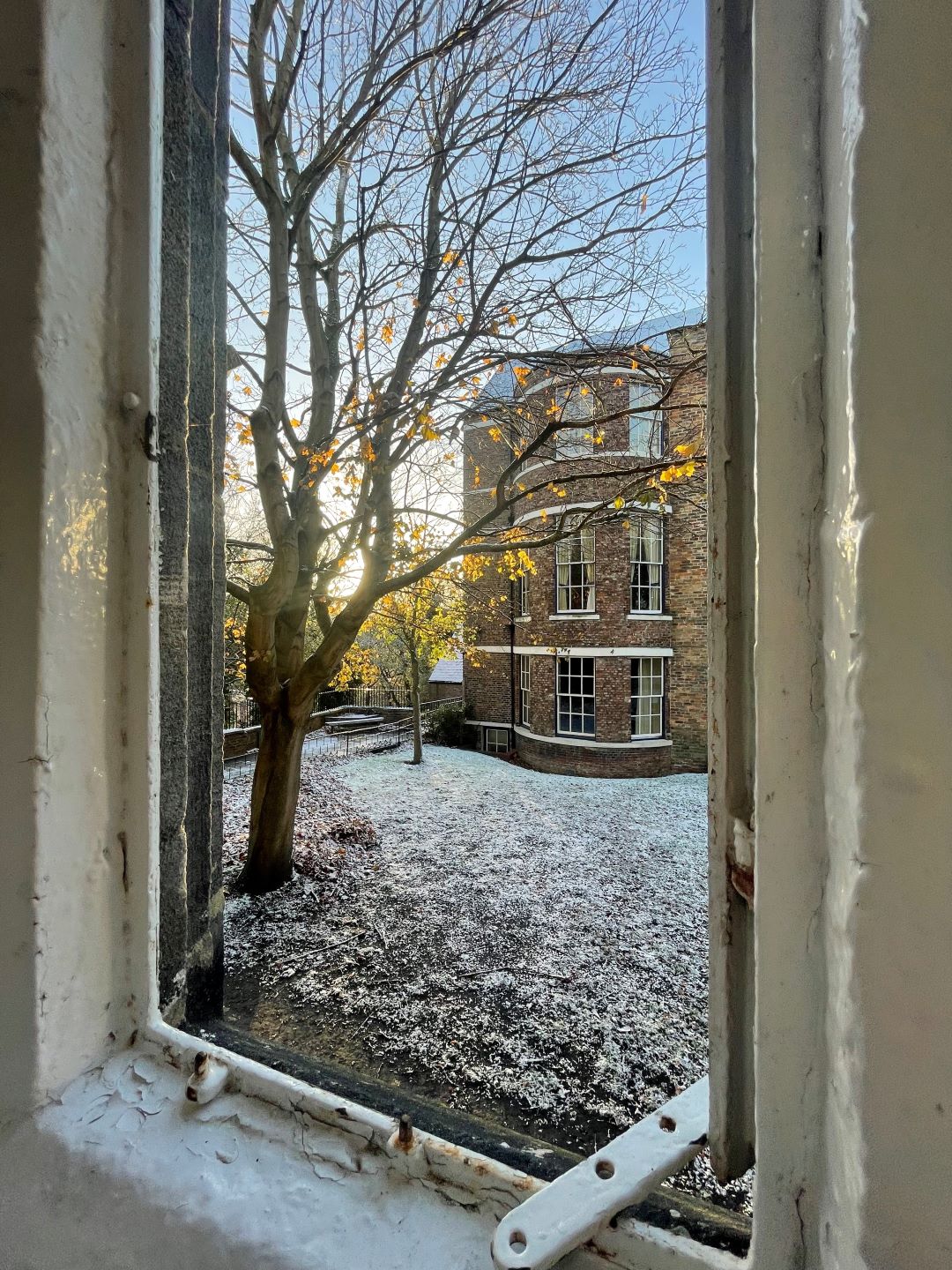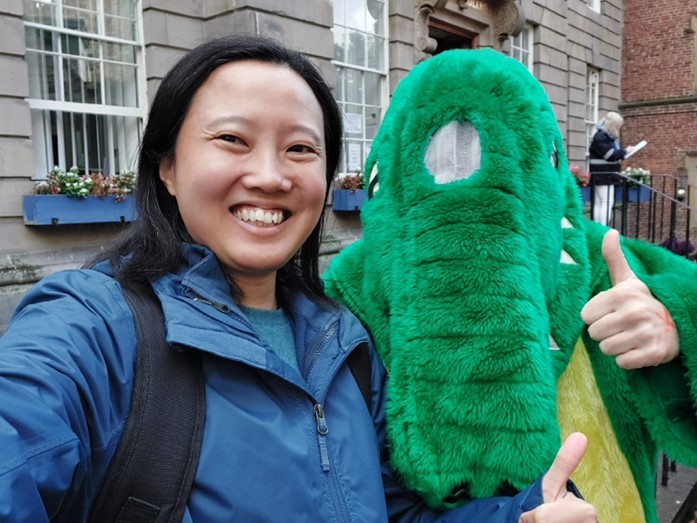Day one: New beginnings
At the end of their first year of archaeology at Durham, students undertake 15 days of excavation, which was how I found myself sitting on a bus towards Bishop Auckland several hours before I would usually be awake. However, I was excited to see where we were going and to start digging. Upon arrival, we were given a tour of the site, including the chapel, which we were warned seeing was “going to ruin [our] archaeological careers” as it was a particularly impressive site… and after that light note, onto where we were digging. The trench I ended up in was looking for the curtain wall, a ditch, and a tower. With that, we started digging.
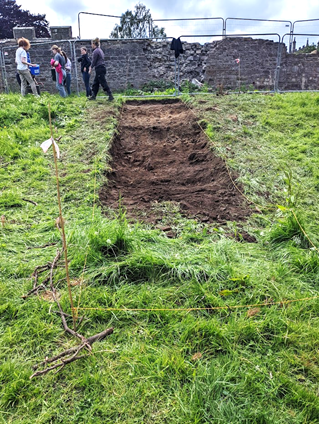
Day two: Mattocks away
Most of the prior day was spent de-turfing the trench today we began to dig down. Finds were sparse but we started to see a rough line of stones…could this be our wall? We kept digging down and towards the end of the day our first finds, animal bones, began to emerge. As this was my first archaeological dig, I was buzzing with enthusiasm for the project, which only grew as we dug down further.
Day three: Here comes the rain
Wednesday was one of the more exciting days of the dig as things really seemed to get going. We kept digging, even though the rain and those of us who forgot coats got to look very fetching in our plastic ponchos.
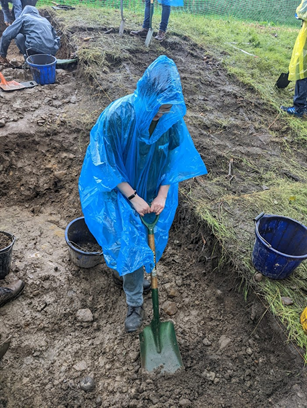
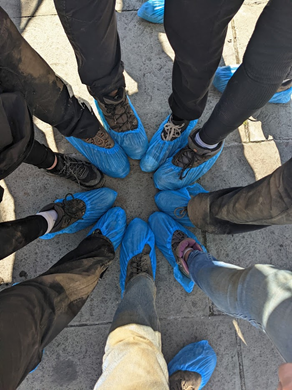
After the rain stopped, mid-way through the afternoon, we were shown an exciting find from another trench. A post-medieval perfume bottle. This was the first unusual find I had seen fresh out of the ground, and completely different to seeing artefacts in museums. It was amazing to look at the beautiful hand-blown glass and think that we were among the first people to see it after it had been discarded as rubbish, hundreds of years ago.
The rain had, unfortunately, turned our trench from soil to mud, and got our shoes quite thoroughly muddy, so, at the end of the day, we donned shoe covers and got back on the coach to Durham.
Day four: the line that was a line but wasn’t a line but was a line …. A working interpretation
Day four was fairly monotonous, carrying on with getting further down in the trench to find more. Most of what we’d got had been animal bone, as well as our rough stoney section. We’d also found a change of colour in the soil that appeared to be a cut line, was this our ditch? The answer? Probably not but also possibly but also we weren’t sure and might find out later…it seemed to change a lot as we went on. We did find some charcoal which made for very good facepaint. It’s nice how, despite doing quite hard labour, we were able to also have fun and joke around, even when the archaeology itself was frustratingly confusing.
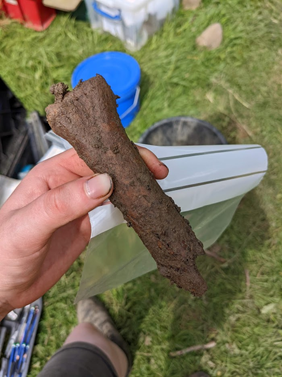
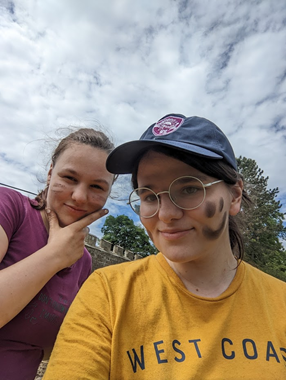
Day five: The end of the trench
On day five we finished up with the mattocks after hitting the water table. After cleaning the trench we started to label the contexts we had found, and then document them. We were told the plan for the next week would be for us to finish on this trench and start a new one, starting the process all over again. It was nice to properly look at the trench and begin to understand the processes in which the different layers of stratigraphy could be built up, and how everything we dug tied together. I’ve had a lot of fun so far at Bishop Auckland, and I’m extremely excited to see what happens next. However, after a week of digging, it was definitely time for a lie-in at the weekend.
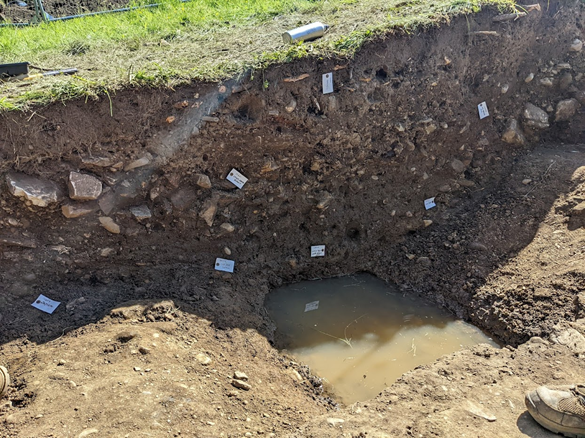
Discover more
Our Department of Archaeology is a leading centre for the study of archaeology and is ranked 8th in the world (QS World University Rankings by subject 2022). We are an inclusive, vibrant and international community. Our students develop knowledge and gain essential and transferable skills through research-led teaching and lab-based training.
Feeling inspired? Visit our Archaeology webpages to learn more about our postgraduate and undergraduate programmes.


